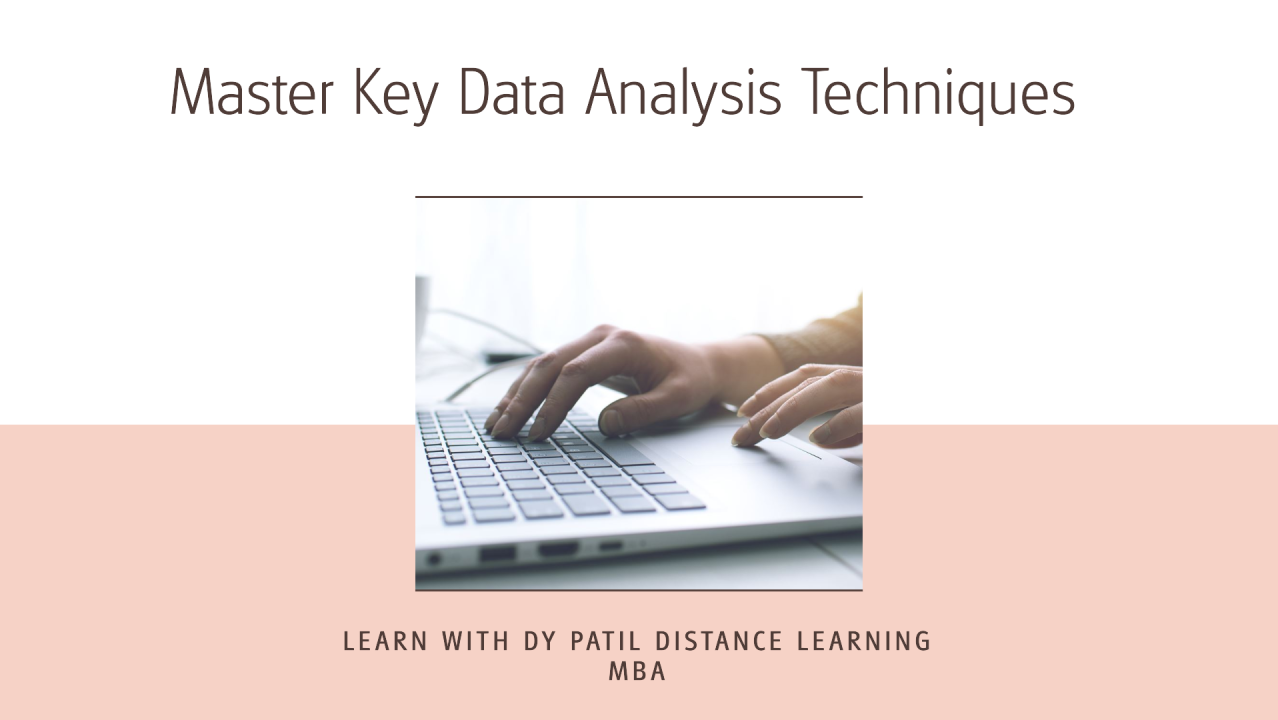
In the digital age, data is paramount. Understanding it goes beyond just gathering numbers; it involves digging deeper to glean insights that drive decisions. The DY Patil distance learning MBA recognizes this essential need and incorporates data analysis techniques in its curriculum. Here’s a breakdown of some key methods covered in the program, designed to make sense of data for real-world applications.
- Descriptive Analytics
This is the first step in data analysis, focusing on summarizing historical data to understand what happened. It’s like looking in the rearview mirror of a car but with a bit more intuition.
Overview: It helps in examining past performance and trends, which can shape future strategies.
Techniques:
- Data aggregation
- Data visualization (charts, graphs)
By utilizing tools like Excel, students in the DY Patil distance learning MBA will not only learn how to interpret historical data but also create impactful visual representations.
- Diagnostic Analytics
Once the past is understood, the next logical step is to explore why certain events occurred. This is where diagnostic analytics comes into play.
Overview: This approach digs deeper into the data to identify the root causes of trends and behaviors.
Techniques:
- Root cause analysis
- Correlation analysis
In the curriculum, students are equipped with methods to analyze variances and understand why specific outcomes unfolded. This skill is crucial in fields such as marketing and operations, where causation might not be immediately clear.
- Predictive Analytics
Looking into the future is a compelling venture, and predictive analytics helps make educated guesses based on historical data.
Overview: Tools and techniques used in this realm offer insights that can forecast potential outcomes.
Techniques:
- Regression analysis
- Machine learning models
The DY Patil distance MBA emphasizes the importance of predictive models and how they can be applied in business scenarios. Students learn to interpret data patterns and trends that can anticipate future events, enabling proactive decision-making.
- Prescriptive Analytics
After predicting future scenarios, the next logical progression is understanding what actions to take to achieve desired outcomes. Prescriptive analytics provides the insight needed for decision-making.
Overview: This technique focuses on providing recommendations based on predictive scores and various scenarios.
Techniques:
- Optimization techniques
- Simulation models
Within the DY Patil distance learning MBA, emphasis is placed on how to leverage prescriptive analytics for strategic planning. Students can explore the possibilities of various business decisions and their prospective impacts before taking action.
- Data Mining
This technique is essentially the treasure hunt for valuable information hidden within large datasets. Data mining is crucial for transforming raw data into actionable insights.
Overview: An array of methodologies is used to analyze data from different perspectives and summarize it into useful information.
Techniques:
- Classification
- Clustering
- Association rule learning
In this course, students become adept at utilizing data mining tools to discover patterns and correlations in datasets. This skill set is invaluable in various industries, including eCommerce, finance, and healthcare.
Why Data Analytics Matters?
Understanding these key techniques equips students with the skills needed to navigate today’s data-driven world. Whether it’s a startup or a multinational corporation, the ability to analyze data can distinguish one business from another.
Here’s how mastering these analytics skills can help:
- Informed Decision-Making: Decisions are backed by data rather than gut feelings.
- Resource Optimization: Companies can tailor resources effectively with insights derived from various analytics techniques.
- Business Growth: By understanding market trends, businesses can identify new opportunities.
Skills Developed Through the DY Patil Distance Learning MBA
Incorporating these analytics into the curriculum not only prepares students for the changing landscape of business but also develops transferable skills that extend beyond academics. Here’s what the program offers:
- Critical Thinking: Enhanced ability to analyze situations and formulate insights.
- Technical Proficiency: Skills in software and tools vital for data analysis.
- Strategic Planning: Knowledge of how to create and implement strategies based on data findings.
Conclusion
Engaging with data analysis techniques is vital in today’s business environment. The DY Patil Online MBA curriculum integrates these skills comprehensively, ensuring students are well-equipped for the future. Through descriptive, diagnostic, predictive, prescriptive analytics, and data mining, graduates emerge ready to face challenges head-on with confidence.
The depth and breadth of the knowledge gained prepare individuals for a variety of sectors, emphasizing that data is not just numbers—it’s the lifeblood behind effective business strategies. The takeaway from this experience goes beyond mere academic achievement; it’s about empowering students to become leaders capable of navigating complex data landscapes.







